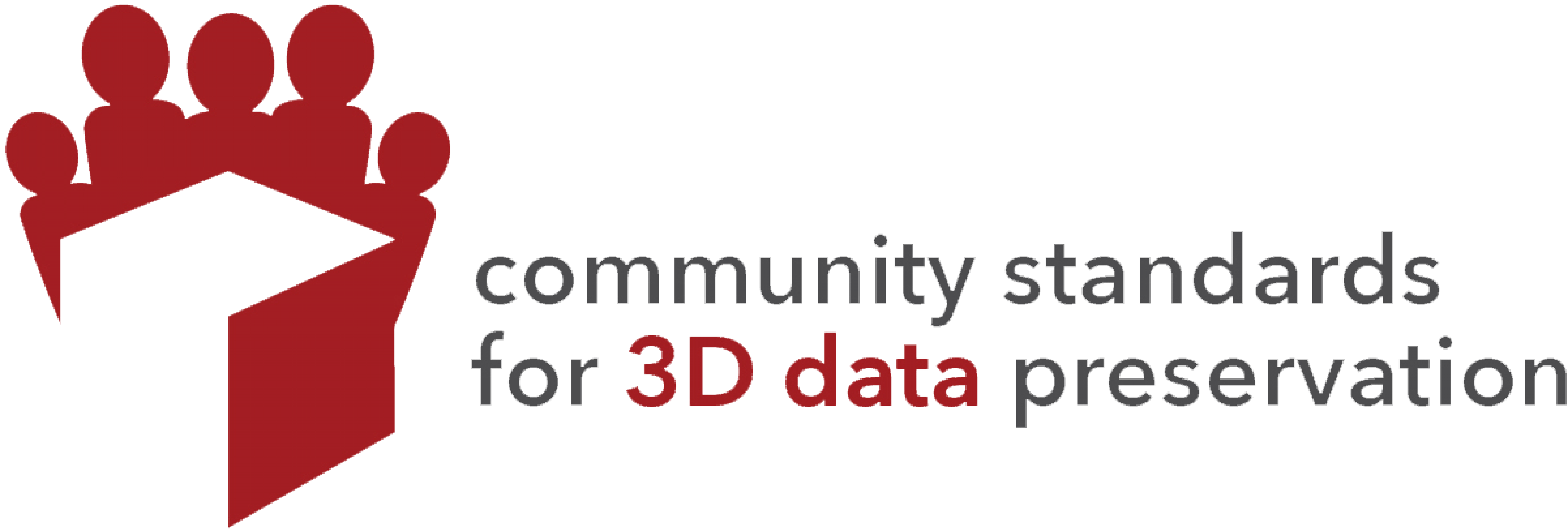Abstract
The best practices group examines some existing preservation standards and builds on those to create a framework that can be applied across multiple 3D data-generating modalities and tiers of implementation, from national to local governmental, educational, and private entities. This group primarily focuses on preservation intervention points (PIPs), which are moments to stop and ask: “What files should I save?” “What information should be recorded at this point?”. Within the PIPs, best practices examine tiers of implementation (‘good, better, best’) relevant for different levels of infrastructure, funding, and audience requirements.
Active Members
Kristina Golubiewski-Davis is the Director of the Digital Scholarship Department at the University of California, Santa Cruz. She leads the library’s outward facing efforts to support the integration of digital methods into teaching and research. Kristy received her PhD in Anthropology from the University of Minnesota, where she incorporated 3D scanning of archaeological objects for research. In her position at UCSC, she leverages her experience with 3D to expand library support of 3D data across its entire lifecycle including scanning, modeling, printing, VR, and preservation.
Jessica Maisano is a Research Associate and the Facility Manager of the University of Texas High-Resolution X-ray CT Facility (UTCT). She arrived at UTCT in 2000 as a postdoc to help build DigiMorph.org (The Digital Library of Morphology), and subsequently collaborated on the NSF Assembling the Tree of Life project for lizards (‘Deep Scaly’). Currently, Jessie is PI of a PEN grant partnering with oVert (the openVertebrate network) to upload ~20 years (~9 Tb) of UTCT scans of fossil and Recent vertebrates to MorphoSource.org, and teach short courses to train the next generation of high-resolution X-ray CT data consumers. She is also the chair of the North American branch of ToScA (Tomography for Scientific Advancement).
Marcia McIntosh received her master’s in Information Studies from the University of Texas at Austin’s School of Information. She is the Digital Production Librarian at the University of North Texas where she assists in the coordinating, management, and hiring necessary to create digital collections.
Jennifer Moore is Head of Data Services at Washington University in St. Louis. She leads a team of experts to address areas of digital data management, curation, analysis, and visualization. She’s been working on 3D capture and preservation since 2014. Moore is a PI on the IMLS grant, Community Standards for 3D Data Preservation (CS3DP), which brings stakeholders together to establish agreement on how to make 3D data long-lasting. She is also a member of the Data Curation Network (DCN) Project Team, which is focused on building a shared data curation model across institutions and a co-PI on the IMLS Specialized Data Curation Workshop grant, which builds on the DCN’s CURATE model to provide training and develop curation resources.
Kieron Niven is a Digital Archivist and Data Standards Lead at the Archaeology Data Service, University of York, UK. Since 2003 he has undertaken work on a number of large project archives including Crossrail, the Historic Landscape Characterisation programme, and the Channel Tunnel Rail Link. As Data Standards Lead he has been responsible for the ongoing development of the ADS Guides to Good Practice through various projects, most notably the 2009–11 Andrew W. Mellon Foundation funded project in conjunction with Digital Antiquity and tDAR.
Will Rourk is currently the 3D data and content specialist with the Scholars’ Lab at the University of Virginia Library with over 20 years experience in 3D technologies. He has a background in Architecture from Virginia Tech and Architectural History from the University of Virginia. His current work focuses on teaching and research in the department of Architectural History at UVA, defining methods of 3D Cultural Heritage Informatics (LIB3DCHI) in the collection, processing, preservation and distribution of 3D data of historic objects, buildings and sites. His work employs the use of 3D scanning technologies and photogrammetry techniques for collecting geometric and color data of historic and cultural context. He has been a key component in working with the UVA Library towards open access of 3D data by the scholarly community. He is nationally active with 3D data preservation efforts such as the Community Standards for Preservation of 3D Data and has lectured on LIB3DCHI at various gatherings of cultural heritage and 3D data specialists. More information about his work can be found here or by following @rezn8r on Twitter.
Rebecca Snyder is the Acting Informatics Branch Chief at Smithsonian Institution, Museum of Natural History.
